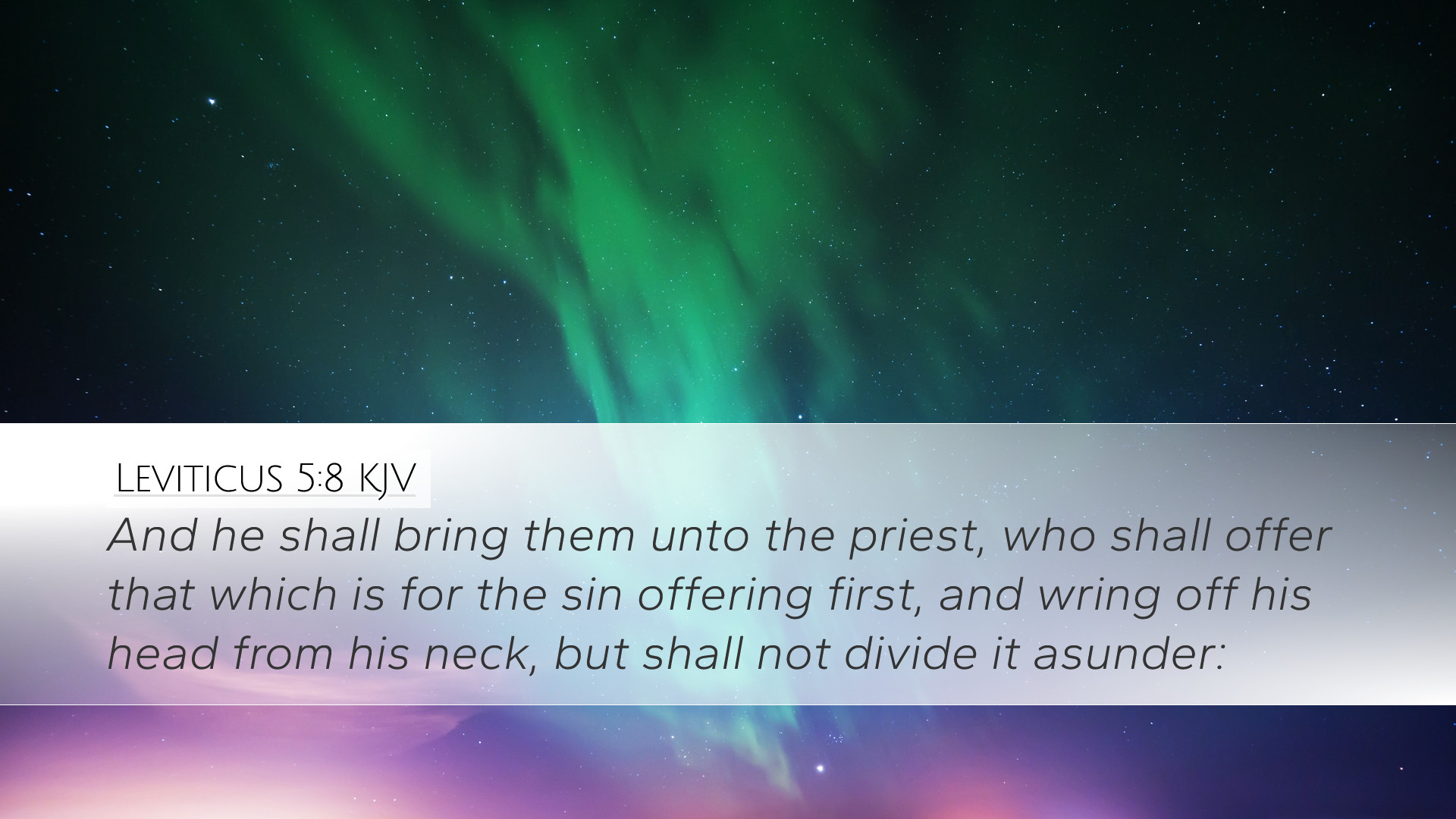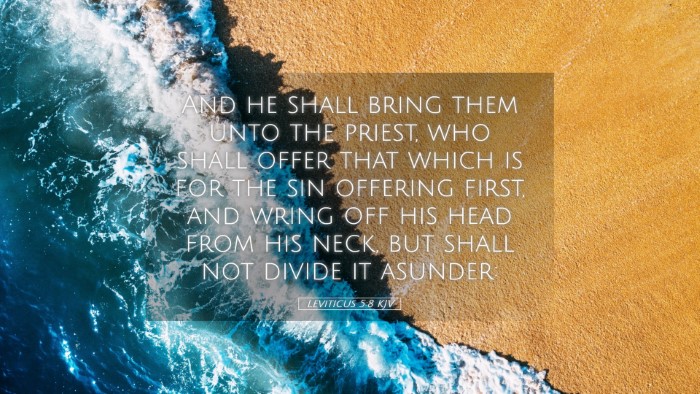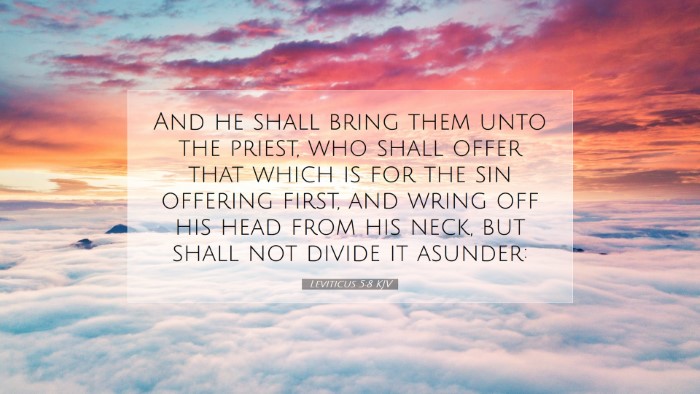Commentary on Leviticus 5:8
Leviticus 5:8 states: "And he shall bring them unto the priest, who shall offer that which is for the sin offering first, and wring off his head from his neck, but shall not divide it asunder." This passage provides crucial insights into the sacrificial system and the nature of sin and atonement in the Israelite community.
Overview of the Context
The Book of Leviticus is primarily concerned with the laws governing the Israelite community, particularly regarding worship and ritual cleanliness. The chapters surrounding Leviticus 5 focus on different types of sin offerings, reflecting God’s desire for His people to maintain holiness and to seek atonement for their transgressions.
Exegesis of Leviticus 5:8
This verse is part of guidelines given to the Israelites regarding sin offerings. The sacrificial system was intended to provide a means for the people to deal with sin and to restore their relationship with God.
Understanding the Sacrificial System
According to Matthew Henry, the sacrificial system was a foreshadowing of Christ's ultimate sacrifice. The act of bringing a sin offering was not merely a ritual, but an acknowledgment of guilt and a step towards reconciliation with God. Henry suggests that the meticulous details provided in these laws accentuate the seriousness of sin and highlight the necessity of atonement.
Analysis of the Act of Offering
Albert Barnes elaborates on the procedures involved in presenting offerings. He notes that the act of offering the animal to the priest symbolizes the transfer of guilt. The priest, as a mediator, plays a vital role in the process of restoring the sinner to a right relationship with God. The specific instructions provided for the offering of the animal result in a deeper understanding of both the cost of sin and the grace of God in allowing for atonement.
The Role of the Priest
Adam Clarke emphasizes the priest's mediation in this sacrificial process. Clarke notes that the priest’s role is both significant and sacred, as he acts on behalf of the people to present their offerings before God. The ritual of wringing off the head signifies a decisive act of commitment and the finality of the sacrificial act; it underscores the idea that sin requires a serious and comprehensive response.
Theological Implications
The pattern of sacrificial offerings described in this verse is rich in theological meaning. Here are some core implications:
- Sin and Guilt: The necessity for a sin offering illustrates the pervasive nature of sin in humanity. It serves as a reminder that sin is not just a flaw in character but a fundamental separation from God.
- Atonement and Restoration: The act of bringing an offering reflects a desire for atonement. The worshipper recognizes their sin and actively seeks restoration through the prescribed process.
- Foreshadowing of Christ: The sacrificial system ultimately points to Christ, the Lamb of God, who offered Himself once and for all for the sins of humanity. This connection invites deeper reflection on the nature of divine grace and forgiveness.
Application for Today
For modern pastors, students, and scholars, Leviticus 5:8 serves as a reminder of the seriousness of sin and the profound grace of God offered through Christ. As believers, we are called to acknowledge our sins and seek reconciliation with God, not through animal sacrifices, but through faith in the completed work of Christ on the cross.
Practical Steps for Application:
- Self-Examination: Encourage regular self-assessment of one’s life in light of biblical truth and the acknowledgment of personal sin.
- Confession and Repentance: Foster an environment where confession is encouraged, and repentance is practiced, knowing that God is faithful to forgive.
- Teaching on Atonement: Provide teaching on the significance of Christ’s atonement, making connections between the Old Testament sacrificial system and the New Testament fulfillment in Christ.
Conclusion
Leviticus 5:8 not only highlights the essential practices of the ancient Israelites but also calls contemporary believers to a deeper understanding of sin, atonement, and God’s mercy. The insights from public domain commentaries encourage a nuanced appreciation of this passage, prompting believers to reflect on their own relationship with God and the sacrificial love demonstrated through Christ.


